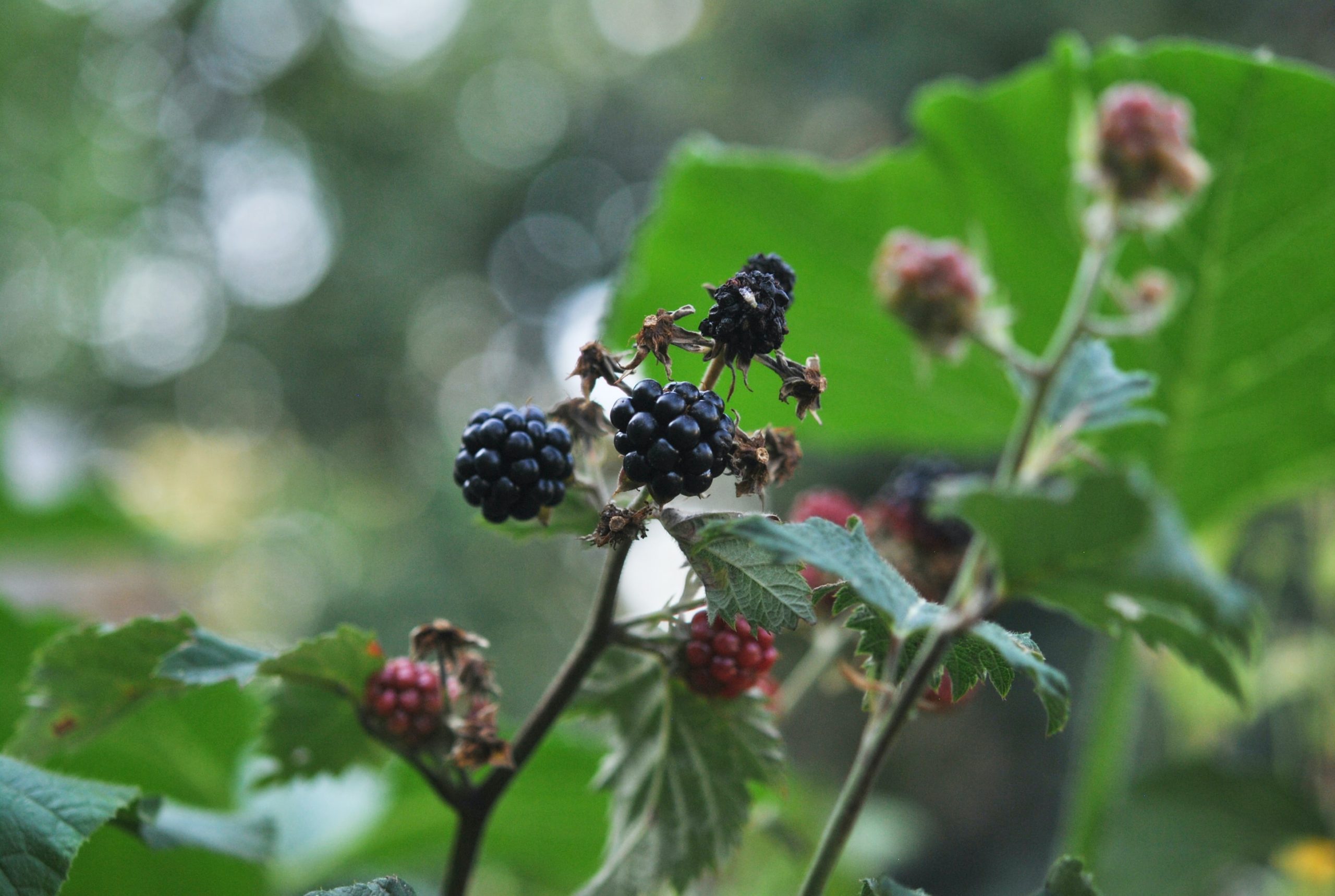Between succulent pies, jams, jellies, cobblers, and even wine, blackberries are a sweet summer treat that we always look forward to enjoying.
Luckily, growing your own blackberries is not hard to come by. Blackberries are some of the easiest berries to grow, even for a beginner gardener.
In this post, we’re sharing with you pointers for growing & propagating blackberry vines.
How to care for blackberry plants.
A fan favorite for just about every zone.
If you live in gardening zones 4 – 10 in North America, there’s likely a blackberry variety for you. Your local garden center will be able to advise you on the blackberry varieties that thrive in your zone.
It all starts with soil.
Blackberry plants prefer a pH balance between 5.5 and 7.0, but I would definitely lean toward the lower number. In fact, if your soil is more toward neutral (7.0), then mulch with pine straw to add more acid to the soil.
Check out this post to learn about testing and amending your soil. Well-draining soil is also important.
Fun in the sun.
Like most summer fruits, blackberries like to soak up the sun: they need at least 8 hours of direct sunlight to produce fruit.
Planting your new plant babies.
When planting new blackberry plants, bury their roots just beneath the surface—you don’t need to go too deep with these. Once planted, keep the top 1 inch of soil moist for the next couple of weeks. After this initial rooting period, your blackberry plants will need 1 – 2 inches of water per week. For those of us who live in a particularly dry climate, you may need to water them daily.
Plan to plant in the fall or, if you’re in a colder climate, right after the final spring frost has come through.
Not this year, folks.
While the blackberry plant itself is perennial, its canes produce fruits every other year (biennial). Brand new canes will only produce leaves the first year. In the second year, these canes will flower and produce the dark, delicious berries you’ve been craving.
Once your new blackberry bush begins growing multiple canes, fruit production will become staggered and you’ll have canes producing fruit each summer.
More water, please.
Hydration is the name of the game when it comes to the fruit-producing season. Those juicy berries need lots of water to plump up.
So once your blackberry plants are producing fruit, water needs increase. Be sure to keep the soil moist throughout the entire harvesting season. Again, if you’re in a drier zone, this may mean watering your blackberry plants daily.
Ripe for the pickin’.
Blackberries are ripe when they are dark and plump. Unlike tomatoes, blackberries do not continue to ripen once picked, so hold your horses until your blackberries are vine ripe.
Pick ripe fruit and refrigerate immediately. Blackberries don’t stay fresh long, even when refrigerated, so snack, cook, or preserve within 2 – 3 days of picking.
How to propagate blackberry plants.
Blackberries are prolific. You may find new blackberry plants sprouting up even a foot or two away from the original parent plant. You can cut & propagate these renegade baby plants and replant elsewhere, or share your propagations with friends and family, or sell to other gardeners once they have rooted.
There are several different ways to propagate your blackberry plants. We’re covering two simple methods for blackberry propagation: tip rooting and cane cuttings.
(Psst… Growing raspberries? These propagation methods can also apply to them.)
Tip rooting:
Tip rooting a method of propagation that’s easy as (blackberry) pie. This method is great if you’re looking to quickly expand the number of blackberry plants in your garden.
To propagate through tip rooting, take the tip of one cane (leaving it connected to the plant), pull it down to the ground and cover it with soil. Once it has developed its own root system over the next 2 – 3 weeks, you can cut your new propagated cane off from the original plant—and voilà, you have a brand new, independent plant!
You can also use the tip rooting technique to plant the tip directly into a pot of soil (instead of the ground), as this instructional video shows.
Cane cuttings:
Grab your pruners and let’s get to cutting.
When choosing a cane to cut, look for a brand new cane from this season. This is a cane that isn’t producing flowers or fruit. Cut off between 4 – 6 inches of the cane, ensuring that it’s a clean cut. (The sharper your pruners, the better.)
Take your new cutting and bury it between 1 – 2 inches in your potting mix. Water so that the soil is moist. You’ll want to keep the soil moist over the next few weeks as your new plant babies begin to take root.
Plant your new propagated blackberry plants into your outdoor garden in the fall or after the final spring frost has passed.
***
Happy pruning, planting, & propagating, y’all!
RELATED READING:


